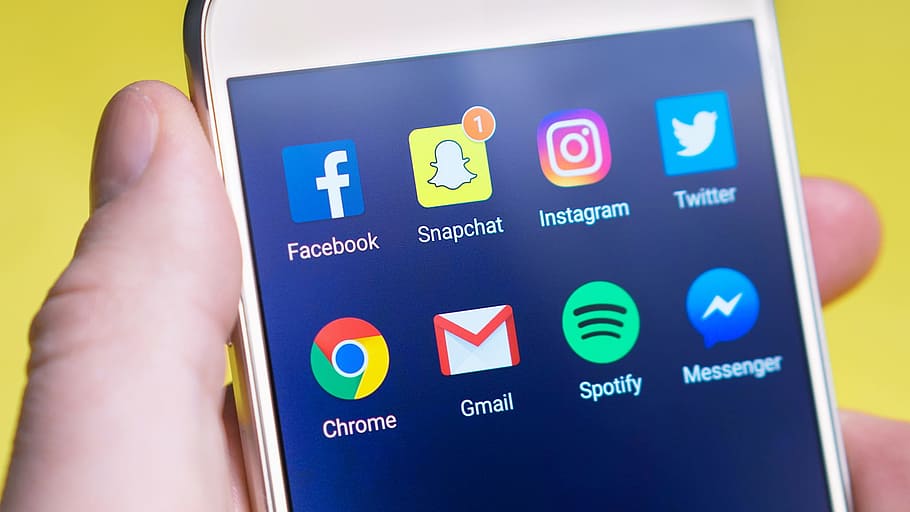
When people comment on social media about shows, they may trigger a bandwagon effect that can change the enjoyment of a program. Researchers suggest both the size and the opinion of the crowd can trigger that effect. IMAGE: PIXABAY
Audience size and comments may affect enjoyment of social television
Posted on March 5, 2020UNIVERSITY PARK, Pa. — The presence of a large audience boosts enjoyment, but it takes just a few haters to ruin a TV show or movie, according to a study of social television, the practice of simultaneously watching television programs while seeing the social media “tweets” of other viewers displayed on the same screen.
Participants who perceived that other people disliked a movie were less likely to enjoy the movie, said S. Shyam Sundar, James P. Jimirro Professor of Media Effects in the Donald P. Bellisario College of Communications and co-director of the Media Effects Research Laboratory.
He added that people were more likely to enjoy the content when they saw cues that suggested the viewing audience was large. However, the participants’ perception of the crowd’s opinion — good or bad — tended to affect them more.
Social television users, in general, are more influenced by the opinions scrolling on their screens rather than how many people are watching the program with them,” said Sundar, who is also an affiliate of Penn State’s Institute for Computational and Data Sciences (ICDS).
Sundar said that social television is becoming more popular. Facebook watch parties and Twitter-based television conversations are popular ways to watch television. Television companies are also actively promoting social television and adding features to facilitate this type of experience, according to Sundar.
“Social media affect viewers because they speak to our natural tendency to follow the crowd — a phenomenon that scholars describe as the ‘bandwagon effect,’” explained T. Franklin Waddell, assistant professor of journalism and communications at the University of Florida, and lead author of the study.
Waddell added that “the findings go beyond traditional bandwagon effects because we are showing that the bandwagon effect is triggered not just by the large size of an audience, but even by the comments of a few viewers.”
The findings, which are reported in a forthcoming issue of Computers in Human Behaviors, may help content providers, such as television stations and movie makers, provide ways for people to both share content and encourage enjoyment.
“The whole point of the entertainment industry is to provide enjoyment,” said Sundar. “If you provide avenues for people to share their opinions — either by giving a thumbs up or thumbs down, or by showing a counter with the number of people watching — those things can have psychological effects on enjoyment. By providing people the ability to concurrently indicate that they are viewing a program and also giving them the ability to make comments, this can have influence on other viewers. With the competition among so many well-produced shows out there, the industry should consider providing features that encourage the bandwagon effect. If you have a huge bandwagon supporting the show, for example, it’s to the television company’s benefit to advertise that.”
However, because comments can shift opinions of the audience, Sundar advised companies to keep a close eye on social media commentary around their shows.
“Having some way to monitor social media reaction won’t just help understand how viewers feel about the show, but will also help predict the enjoyment for other people who watch the show,” he said.
The researchers recruited 410 participants for the study. The participants watched an action movie video clip that was accompanied by three different cues — opinion, audience size and distance of audience members. Those cues were randomly assigned to the experimental conditions.
Because cues which indicated that audience members were either close to — within 10 miles — the viewer, or far away — within 1,000 miles — had little effect on enjoyment, the researchers suggest that the bandwagon effect may be a global, rather than local, phenomenon. However, they caution that further research is necessary.
“We weren’t able to detect that the location of the audience mattered, but it might be a subtle effect,” said Waddell. “At this point, we still don’t know.”
He added that exploring possible effects of similarity of other audience members to oneself may be one possible direction for future research. “Location of the audience is just one factor, among many others, that might shape our mental image of who the audience for media actually is,” Waddell explained. “More direct markers of identity, such as a profile picture or a list of shared interests, might do more to shape how other viewers affect our enjoyment of social media.”
